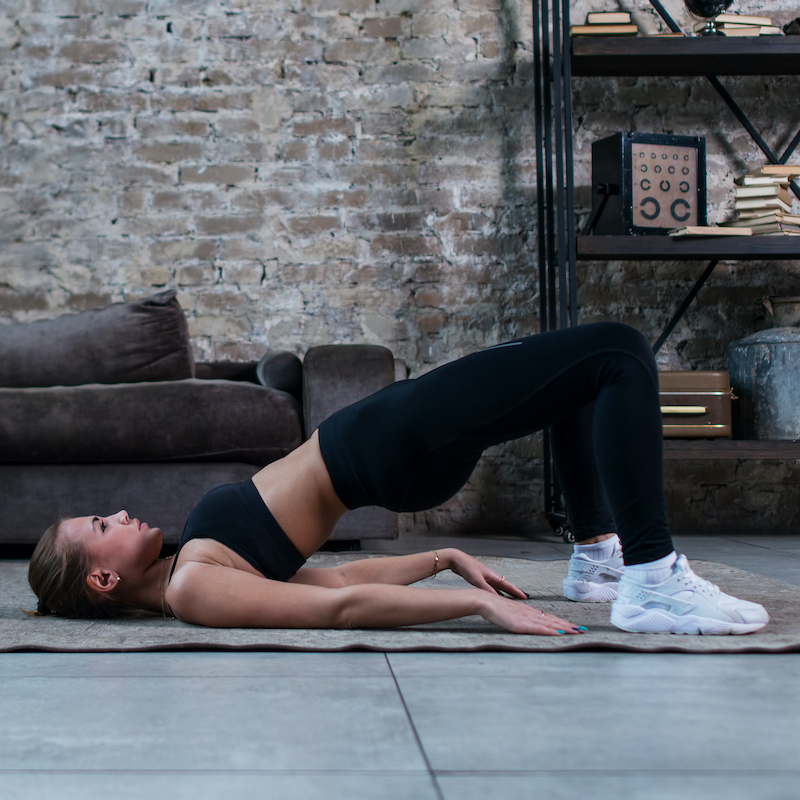This Dr. Axe content is medically reviewed or fact checked to ensure factually accurate information.
With strict editorial sourcing guidelines, we only link to academic research institutions, reputable media sites and, when research is available, medically peer-reviewed studies. Note that the numbers in parentheses (1, 2, etc.) are clickable links to these studies.
The information in our articles is NOT intended to replace a one-on-one relationship with a qualified health care professional and is not intended as medical advice.
This article is based on scientific evidence, written by experts and fact checked by our trained editorial staff. Note that the numbers in parentheses (1, 2, etc.) are clickable links to medically peer-reviewed studies.
Our team includes licensed nutritionists and dietitians, certified health education specialists, as well as certified strength and conditioning specialists, personal trainers and corrective exercise specialists. Our team aims to be not only thorough with its research, but also objective and unbiased.
The information in our articles is NOT intended to replace a one-on-one relationship with a qualified health care professional and is not intended as medical advice.
9 Best Yoga Poses for Your Gut (Digest + Detox)
June 21, 2024

Yoga is a go-to remedy to reduce tight-muscle tension, but there’s so much more to it.
For instance, today we can actually see how yoga changes your brain. And while it’s true that sometimes we put too much focus on how “bendy” we can be in a yoga pose — like how far we can take our hands to the floor in a forward fold, for example — the truth is the heart of yoga focuses on the naval region.
That’s why here, we focus all of our attention on the best yoga poses for your gut.
Yoga and the Gut
For thousands of years, yoga practitioners harnessed naval-focused postures and breathing exercises to tap in to the transformative power of the gut. Today, paying special attention to that region makes more sense than ever.
Up to 80 percent of the immune system is housed in the gut, making it the hub of our health. The gut is also nicknamed the “second brain” for its impact on our mental well-being.
Clearly, yogis have been on to something!
Many yoga postures focus on the abdominal area, the area today associated with the enteric nervous system. Gut-focused yoga stimulates the gastrointestinal tract nerve cells to interact with the brain through the vagus nerve.
Some research indicates yoga therapy can aid people dealing with irritable bowel disease and mood disorders. This makes sense, since people diagnosed with ailments like irritable bowel syndrome, irritable bowel disease and even depression commonly display altered vagus nerve activation.
Yoga (along with aerobic exercise) helps improve parasympathetic tone by getting the vagus nerve back on track.
Aligning your yoga practice with movement and your breath helps facilitate a healthier diaphragmatic breathing pattern. This allows the vagus nerve to interact with the brain in a way that produces less tension and agitation, while improving digestion and sleep.
Best Yoga Poses for Your Gut
Modern-day stressors often send the sympathetic nervous system into overdrive, unleashing stress hormones that send us into “fight or flight” mode. This slows down digestion and can lead to all sorts of digestive distress, including bloating, constipation or diarrhea.
The best yoga poses for your gut focus not only on massaging your digestive organs for better mobility, but also include restorative postures to activate your body’s parasympathetic nervous system to help coax your body into a calmer state. Your overtaxed gut will thank you!
While all of these poses can improve your digestion and overall gut health, you’ll benefit from practicing on an empty stomach (especially the twists!).

1. Crocodile
Building a foundation of healthy diaphragmatic breathing is quintessential to all of your yoga work and meditation that follows. While it may not feel like you’re doing much in crocodile pose, know that you’re naturally aligning your body to reduce shallow chest breathing while encouraging a healthier diaphragmatic breath pattern.
Let’s get started!
- Lie face down on the floor.
- Stack your forearms on top of one another, with each hand on the opposite elbow.
- Draw the forearms in so that the chest is slightly off the floor, with the forehead resting on crossed arms. If this creates tension in your shoulders, you can slide your elbows out a little wider or roll up a blanket and place it under your collarbones.
- Slightly separate the legs a comfortable distance with the toes turned in, out or back. Do what feels best in your body.
- Close your eyes, and relax your shoulders, abdomen and legs. As you breathe, soften the eyes and your jaw. Turn your attention to the breath, and notice the sensation of your belly against the floor on each inhale as your diaphragm draws down.
- Observe your breath with curiosity, knowing with practice the breath will start becoming smoother, quieter, with inhalations and exhalations about the same length.
Center in crocodile for 2 to 5 minutes.
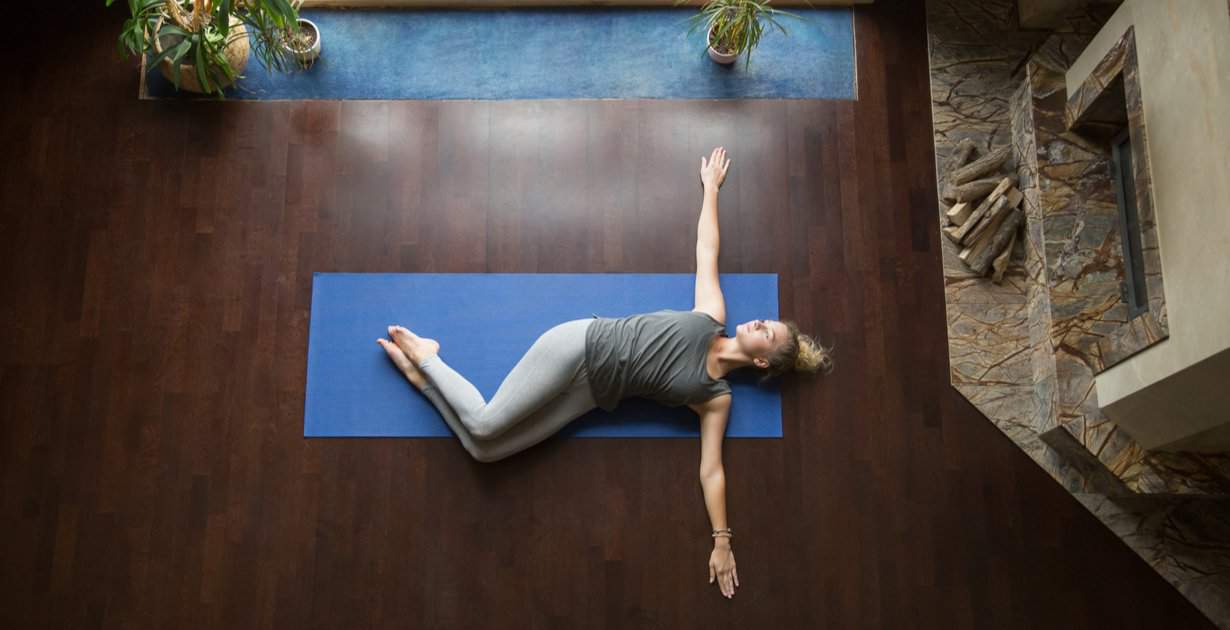
2. Reclining twist
Use reclining twist to invigorate your organs and nervous system while aiding in digestion. This gentle twist also helps promote spinal flexibility while releasing back tension.
- Lie on your back with your arms resting on the floor out along your sides.
- Bend your knees, and place your feet on the floor about hip-width apart.
- Keeping your feet on the floor, exhale, and lower your knees and lower body to the right. (You have an option to turn your head in the opposite direction, looking away from the stretch.)
- Inhale, engage the naval center and use the strength of your core to pull your knees back to center.
- Exhale, and slowly lower the knees and lower body to the left, with the option to take your gaze over the right shoulder.
- Repeat 3 to 5 times. Play around with holding a few twists, making sure your breath keeps moving.
Note: We sometimes focus on twisting as far as we can, which can hamper our natural diaphragmatic breath. If you notice your twist is constricting your breath in away way, simply back out of it a bit so your breathing becomes smooth and easy again.
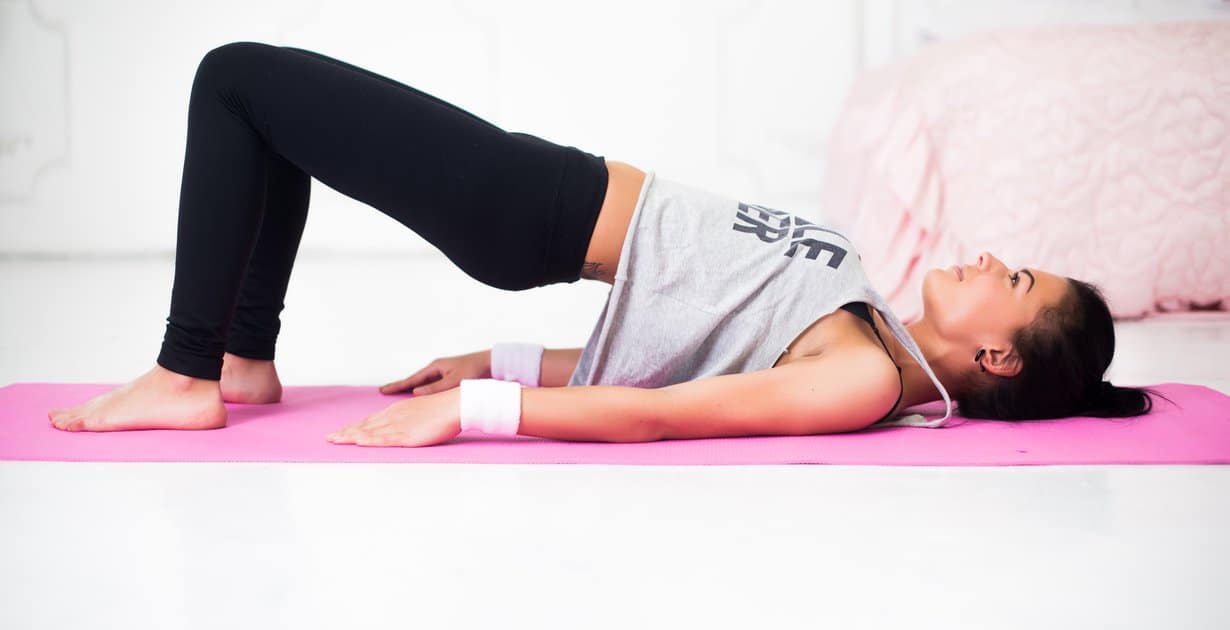
3. Bridge pose
The gentle compression on the abdominal organs invigorates stagnant digestion while creating an energizing effect. This is also considered a great butt exercise.
- Lie on your back, and bend the knees, taking the feet hip-distance apart.
- Place your arms along your sides on the floor.
- Roll the shoulder blades under you, and engage the core as you press through the heels to gently lift the hips off the ground.
- Be mindful not to lift too high — we want to avoid creating an excessive arch in the low back.
- Hold here for 5 to 10 breaths, breathing as your gently engage the core, including your buttocks muscles.
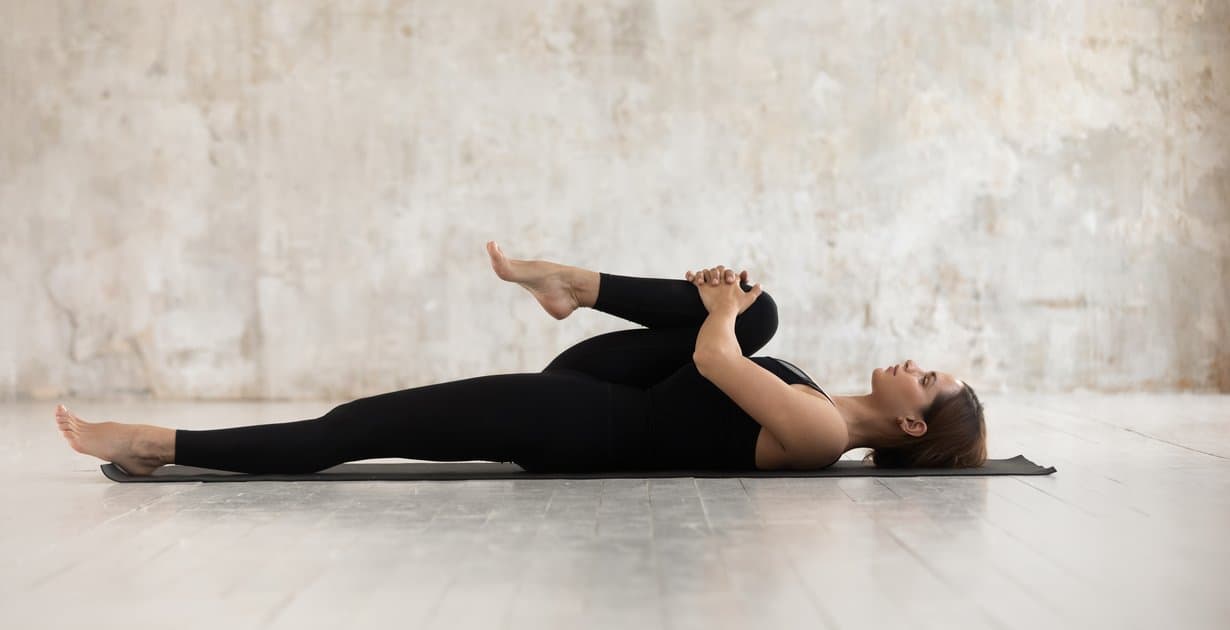
4. Knees-to-chest pose
Also known as “wind-relieving pose,” you can see why this posture benefits digestive health. And here’s where things really get interesting …
Researchers included this pose in a 2017 study and found gut-focused yoga helps our bodies absorb more micronutrients, particularly zinc, iron, copper and magnesium.
According to the researchers, “The yoga postures … helped improve digestion by the massaging of internal digestive glands, which in turn, helped in an enhanced absorption of micronutrients. Yoga practices help in gentle and automatic massaging of internal organs and, therefore, facilitate the functioning of digestive system, respiratory system, circulatory system, nervous system, endocrine system, and excretory system.”
To practice knees-to-chest pose:
- Lie on your back with your legs extended straight out and resting on the floor.
- Exhale, and draw your right knee in toward the chest.
- Wrap your hands around the right leg just below the knee, and draw the knee in toward the chest.
- Hold for 15 seconds, being mindful to keep your back, shoulders, pelvis and lengthened leg on the ground.
- Repeat on the other side.
- Finally, draw both knees, and wrap your arms around them, drawing them toward the chest as you relax through the core. Hold for 10 to 15 seconds.
5. Abdominal squeeze
Working with abdominal squeezes helps improve abdomen tone and massages and improves circulation to the abdominal organs while strengthening the abdominal wall.
The real benefit comes when you coordinate the squeezes with diaphragmatic breathing, inviting your body to enter a more balanced parasympathetic nervous system mode, also known as “rest and digest.”
Just a word of caution: Abdominal squeeze and releases may not be suitable for people dealing with hernias, recent abdominal surgery, pregnancy, menstruation, glaucoma or uncontrolled high blood pressure. Check with your health care provider to see if it’s right for you.
To practice:
- Come to a standing position with your feet slightly wider than your hips.
- Bend at the knees, and place your hands on your thighs.
- As you exhale, contract your core, drawing your belly button toward your spine.
- Inhale, and let the contraction relax.
- Repeat 10 times.

6. Standing forward bend
Hamstrings get most of the credit when it comes to forward bending poses in yoga, but your digestive organs and glands are also stimulated and massaged as you breathe into the natural compression of a forward fold.
Depending on your comfort, there are several options for forward bends, but all will help you turn inward while supporting healthy digestion and elimination.
Note: Avoid this pose if you’re dealing with a low-back or hamstring injury, sciatica, glaucoma, uncontrolled high blood pressure, or a detached retina.
- Stand with your feet hip-distance apart.
- Exhale, and engage the thighs and core as you bend forward, hinging at the hips.
- Place your fingertips on the floor (or a yoga block) in front of your feet.
- Lengthen the spine as you inhale and soften into the pose as you breathe out.
- Hold for several breaths, then engage your inner thighs, roll the buttocks together, and draw up through the pelvic floor and core to come to a standing position. Breathe.
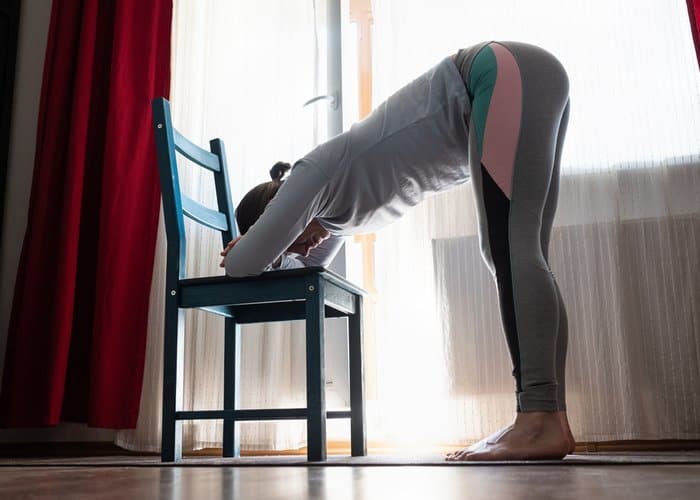
Option: If a full forward fold is feeling too intense, use a chair as a prop, and gain the same digestive benefits without overdoing it.

7. Seated spinal twist
Twists help invigorate your digestive system and also help squeeze out toxic buildup. The good news is a gentle twist goes a long way, so stop at the first sensation of stretch and resist the urge to overdo it.
- Start in a seated position with your legs extended in front of you.
- Cross your right root over your left knee, planting it onto the floor.
- Place your right arm behind you, fingertips to the floor.
- Inhale, and lengthen the spine.
- Exhale, and place your left elbow over your outer right thigh to move into the gentle twist.
- Look over your right shoulder without straining your neck.
- Take 5 breaths in this twist.
- Gently unwind, and repeat on the other side.
Note: You can perform this gentle twist from a seated position in a chair if the floor is not comfortable.

8. Legs up the wall pose
This calming pose encourages further transitions your body into “rest and digest” mode while aiding circulation and GI health.
(This gentle inversion is also a great yoga for lymph flow posture to help nurture your immune system.)
- To begin, roll a towel or blanket to about 4 inches in diameter.
- Then, sit with one hip against the wall and your rolled towel nearby.
- Carefully roll onto your back as you swing your legs up the wall.
- Find a comfortable distance from the wall so your legs can easily rest on it.
- Bend your knees, and place your feet on the wall so you can lift your hips enough to place the roll under your pelvis.
- Rest your pelvis on the roll, and extend your legs up the wall to relax there.
- Close your eyes, and bring your attention to your breath at the edge of your nostrils.
- Stay here for 3 to 5 minutes, using your exhalations to help relax.
- Notice the rise of your belly, expansion of your ribs and lifting of the chest (in that order) with each inhale.
- Notice the belly relaxing into each exhale as the ribs draw back in.
- Breathe, rest and let gravity do its thing.
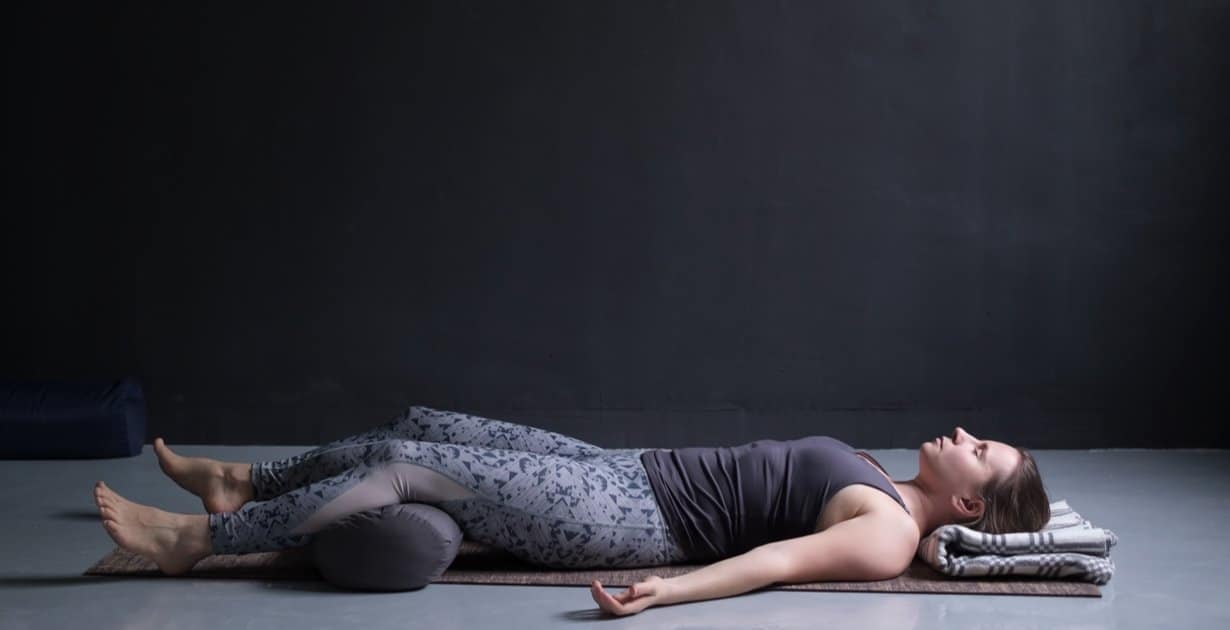
9. Corpse pose
Integrate all of the work you’ve done in this resting relaxation to close out the best yoga poses for your gut practice.
While it may be tempting to skip out on this last step, enjoy the inward focus and centered, calm awareness that occurs here.
You can use a thin pillow under your head to support your neck. A rolled blanket or foam roller under the backs of the knees can also create more comfort in your low back.
And of course, cover up with a blanket if you’d like. (Just don’t fall asleep!)
- Lie flat on your back with your legs long and your arms along your sides, palms up.
- Pull your shoulder blades underneath you, and close your eyes.
- Follow the flow of your breath, noticing the cool sensation of the breath as it hits the edge of your nostrils.
- Rest here for several minutes, letting the benefits of your practice take hold.





